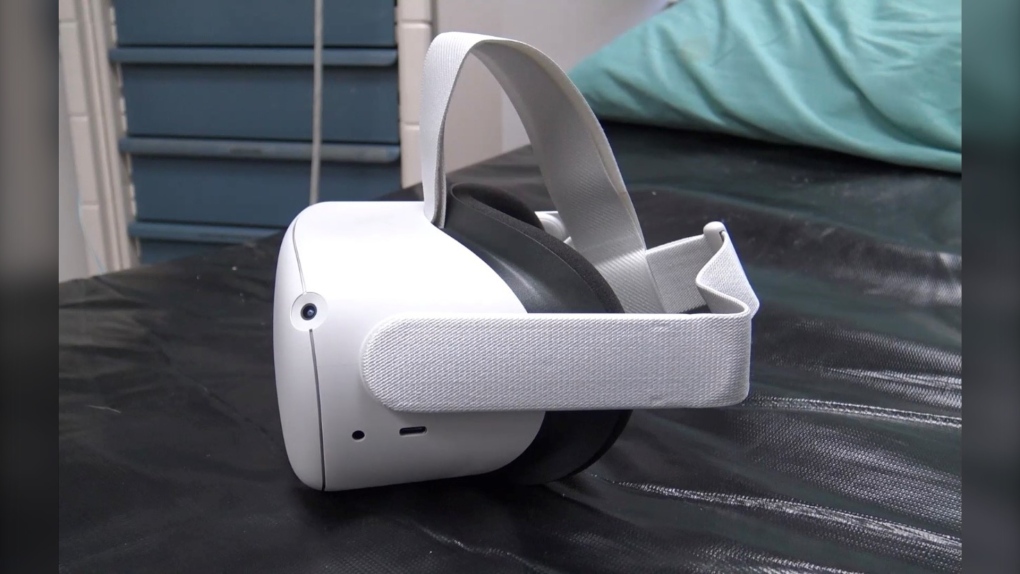Using virtual reality tech to manage pain in paediatric patients
A new study spearheaded by London, Ont.'s Lawson Research Institute and Children’s Hospital is using virtual reality (VR) technology to help its smallest patients during distressing and painful procedures.
According to a press released issued by London Health Sciences Centre’s (LHSC) Lawson Health Research Institute and Children’s Hospital, the study – which is currently underway – recruited 90 paediatric patients and randomized them into three groups.
“The study is focusing on paediatric patients who need port access. A port is a little reservoir that sits underneath the skin that allows access to blood or medication with the use of a needle. Ports are most commonly used in paediatric cancer patients," the release says.
One group will use a VR headset that allows them to play interactive games. The second group will have access to tablet technology, while the third group will be provided with non-technological distractions.
During each procedure, the patient’s response will be recorded, and then compared using a tool called the “Observational Scale of Behavioral Distress” to determine which intervention method led to the best outcome.
 A virtual reality headset, which researchers at Lawson Health Research Institute plan to test on paediatric patients to help them feel more comfortable during painful procedures. (Source: Lawson Health Research Institute)
A virtual reality headset, which researchers at Lawson Health Research Institute plan to test on paediatric patients to help them feel more comfortable during painful procedures. (Source: Lawson Health Research Institute)
“This can be very distressing for a patient and it can set the tone for their entire clinic day and course of treatment,” says Dr. Alexandra Zorzi, Lawson associate scientist and paediatric oncologist at Children’s Hospital. “Minimizing the stress, anxiety, and pain of the procedure is key to avoiding a negative experience.”
For Dr. Naveen Poonai, Lawson scientist, principal investigator and emergency department physician at Children’s Hospital, this technology is the way of the future.
“Technology holds immense potential for improving the experience of our young patients and their families,” explains Poonai. “VR is becoming increasingly popular amongst young people and some early research shows VR has been helpful in painful procedures, even in adults.”
The study is expected to be completed by the end of 2022, and the research team is already in talks with Children’s Hospital staff and leadership to use VR as a clinical tool if the study can prove the technology is effective for its paediatric patients.
“My hopes are that we develop a variety of skills we can tailor to patients,” adds Zorzi. “There are patients who receive all kinds of support but still struggle, so having a variety of techniques available to see what works best is a positive step forward.”
The use of the VR devices was made possible with support from the Children’s Health Foundation.
CTVNews.ca Top Stories

Quebec nurse had to clean up after husband's death in Montreal hospital
On a night she should have been mourning, a nurse from Quebec's Laurentians region says she was forced to clean up her husband after he died at a hospital in Montreal.
Northern Ont. lawyer who abandoned clients in child protection cases disbarred
A North Bay, Ont., lawyer who abandoned 15 clients – many of them child protection cases – has lost his licence to practise law.
Bank of Canada officials split on when to start cutting interest rates
Members of the Bank of Canada's governing council were split on how long the central bank should wait before it starts cutting interest rates when they met earlier this month.
Maple Leafs fall to Bruins in Game 3, trail series 2-1
Brad Marchand scored twice, including the winner in the third period, and added an assist as the Boston Bruins downed the Toronto Maple Leafs 4-2 to take a 2-1 lead in their first-round playoff series Wednesday
Cuban government apologizes to Montreal-area family after delivering wrong body
Cuba's foreign affairs minister has apologized to a Montreal-area family after they were sent the wrong body following the death of a loved one.
'It was instant karma': Viral video captures failed theft attempt in Nanaimo, B.C.
Mounties in Nanaimo, B.C., say two late-night revellers are lucky their allegedly drunken antics weren't reported to police after security cameras captured the men trying to steal a heavy sign from a downtown business.
What is changing about Canada's capital gains tax and how does it impact me?
The federal government's proposed change to capital gains taxation is expected to increase taxes on investments and mainly affect wealthy Canadians and businesses. Here's what you need to know about the move.
New Indigenous loan guarantee program a 'really big deal,' Freeland says at Toronto conference
Canada's Deputy Prime Minister Chrystia Freeland was among the 1,700 delegates attending the two-day First Nations Major Projects Coalition (FNMPC) conference that concluded Tuesday in Toronto.
'Life was not fair to him': Daughter of N.B. man exonerated of murder remembers him as a kind soul
The daughter of a New Brunswick man recently exonerated from murder, is remembering her father as somebody who, despite a wrongful conviction, never became bitter or angry.




























